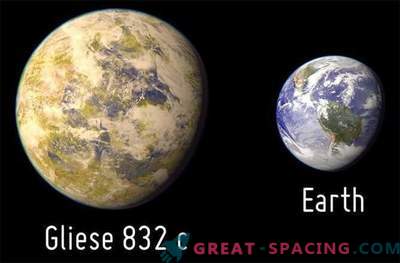
On the territory of the constellation Scorpio, one can find the triple star system Gliese 667. The star Gliese 667C attracted the attention of researchers, as the planet that is promising to search for life revolves around it.
The star belongs to the category of cold red dwarfs. It is inferior to the Sun in mass (31%) and diameter (42% of solar). Due to the presence of outbreaks of Gliese, 667C is listed in the list of flare variable stars.
Although the star is considered the least studied in the ternary system, scientists are constantly returning to it in the reviews because of the presence of exoplanets. Surprisingly, there are 7 exoplanets at once around 667C around Gliese. The most promising seems Gliese 667C with.

It is 22.7 light-years distant from us and is located in the habitable zone. One rotation in orbit around the star spends a little more than 28 Earth days, and the distance between them is 0.12 a. e. Gleze 667C with is considered a warm super-earth with a solid surface. It in many respects resembles our planet, although it is 3.8 times greater than its mass. This world receives 90% of the amount of energy that we get from the sun.
The analysis shows that the temperature on the planet varies from -27 ° C to + 27 ° C, which creates favorable conditions for the development of life. It is likely to believe that on Gliese 667C it will be possible to find not only the atmosphere, but also the greenhouse effect.
But here the scenario with the suffocating atmosphere of Venus is not repeated. The greenhouse effect of exoplanets allows you to create relatively comfortable conditions. It is believed that the world is in a tidal capture, and therefore, turned to the star by one side.
In favor of the suitability to life of this planet, the index of similarity to the Earth, which is 0.84 (maximum - 1), speaks. Therefore, scientists are waiting for the launch of the telescope James Webb to conduct a detailed study of the atmosphere.











































